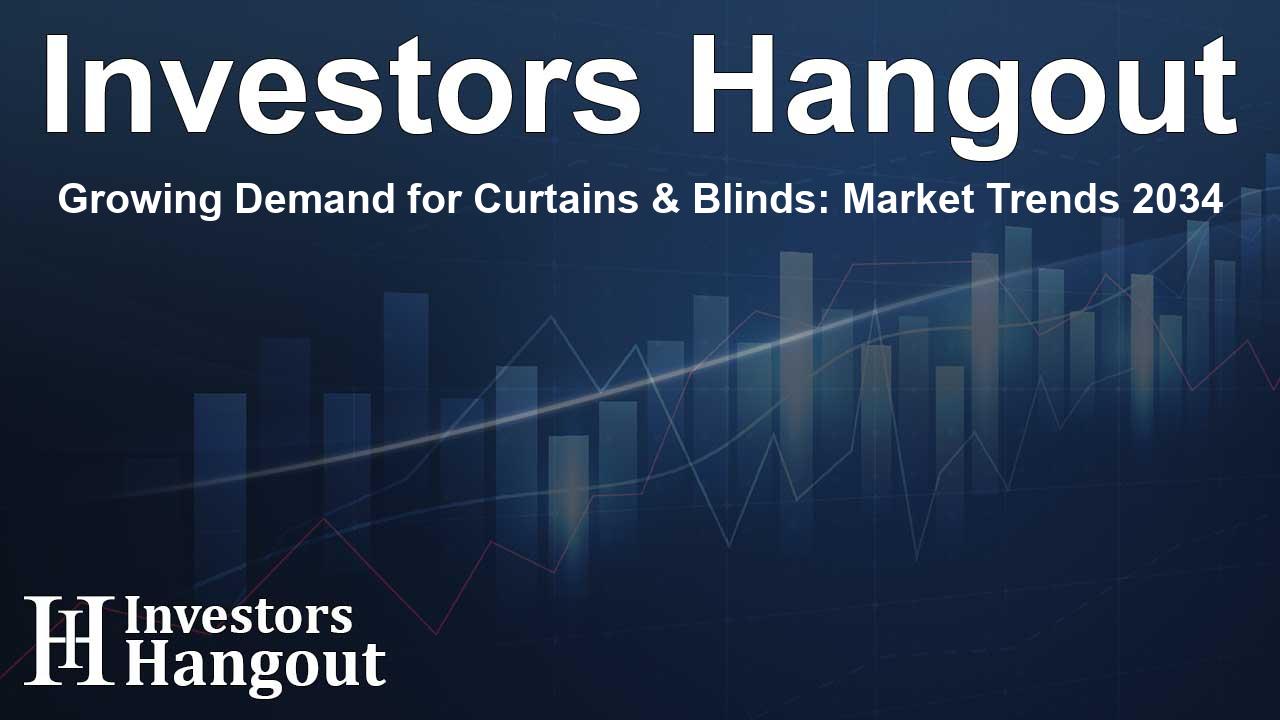Growing Demand for Curtains & Blinds: Market Trends 2034

Transforming the Curtains and Window Blinds Market
The global curtains and window blinds market is witnessing remarkable growth as consumer preferences naturally evolve towards creating comfortable, aesthetically pleasing, and energy-efficient living spaces. A recent research report presents an intriguing forecast suggesting that the market, valued at approximately USD 25.2 billion, is projected to reach USD 58.5 billion by 2034, growing at a compound annual growth rate (CAGR) of around 8.99% from 2025 onward.
Consumer Trends Driving Market Growth
Recent developments show a significant shift in consumer behavior, focusing on sustainability and unique designs. Homeowners and businesses alike are increasingly favoring window treatments that are not only stylish but also functional. Key factors contributing to this change include a rising interest in comfort, energy efficiency, and the latest technological advancements in window coverings.
Smart Technology Integration
Technology has transformed how consumers interact with their window treatments. Smart shades and motorized blinds have gained popularity, providing convenience and energy savings. By integrating automation and remote controls, these products appeal to those seeking innovative yet practical solutions for their spaces.
Urbanization and Construction Boom
Urban growth and significant real estate development are additional driving forces behind the curtains and window blinds market expansion. As more residential and commercial properties are developed, the demand for high-quality window coverings that offer both privacy and style is surging. Developers and designers often look to enhance their projects with curtains and blinds that complement modern architecture while providing essential functionality.
The Sustainability Factor
Increasing awareness of environmental issues has prompted consumers to seek energy-efficient solutions. Sustainable materials and designs play a crucial role in meeting this demand, influencing manufacturers to innovate while minimizing their ecological footprint. Products like thermal curtains and insulated blinds help regulate indoor temperatures, thereby reducing energy consumption.
Variety of Product Offerings
The market offers a diverse range of window treatment options, including curtains, roller blinds, venetian blinds, and stylish roman shades. This variety caters to various consumer tastes and preferences, appealing to all market segments from affordable products for large housing developments to bespoke installations for luxury spaces.
Market Challenges and Opportunities
While the curtains and window blinds market exhibits strong growth potential, several challenges remain. Fragmentation within the industry and variances in product quality can undermine consumer confidence. However, this same fragmentation offers opportunities for improving standards, innovative designs, and better service delivery. Enhanced e-commerce solutions enable consumers to access a wider array of products, stimulating demand across diverse market segments.
Key Technologies in Window Treatments
The recent advancements in window treatment technologies reflect consumer preferences for convenience and energy-saving solutions. Smart window systems are not just a luxury but are increasingly seen as necessary assets for contemporary living spaces. As homeowners integrate smart devices into their daily lives, the demand for compatible window coverings will only increase.
Regional Insights on Market Dynamics
The market is segmented across different regions, with each presenting unique dynamics due to varying consumer trends and economic factors. North America, particularly the U.S. and Canada, continues to lead in market innovation and adoption of advanced window treatments. Meanwhile, European and Asia-Pacific regions are also showing impressive growth due to rising urbanization and disposable income levels.
Summary of Market Segments
- By Application: Residential, Commercial, Hospitality, Healthcare, Educational.
- By Product Type: Curtains, Vertical Blinds, Roller Blinds, Venetian Blinds, Roman Shades, Cellular Shades.
- By Material: Fabric, Wood, Plastic, Metal, Bamboo, Synthetic.
- By Operation: Manual, Electric, Cordless, Smart, Remote-Controlled.
Frequently Asked Questions
What is the projected market size of the curtains and blinds sector?
By 2034, the market is expected to reach approximately USD 58.5 billion.
What are the main drivers of growth in this market?
Consumer interest in comfort, energy efficiency, and smart technology integration are key growth drivers.
How are technology trends influencing the market?
Smart and automated window treatments are becoming increasingly popular for their convenience and energy-saving capabilities.
What regions are leading in market growth?
North America, Europe, and Asia-Pacific show significant demand and growth due to urbanization and consumer spending on home enhancements.
What future opportunities exist within the market?
There are opportunities for growth in sustainable products, technological innovations, and enhanced e-commerce platforms to meet evolving consumer demands.
About The Author
Contact Kelly Martin privately here. Or send an email with ATTN: Kelly Martin as the subject to contact@investorshangout.com.
About Investors Hangout
Investors Hangout is a leading online stock forum for financial discussion and learning, offering a wide range of free tools and resources. It draws in traders of all levels, who exchange market knowledge, investigate trading tactics, and keep an eye on industry developments in real time. Featuring financial articles, stock message boards, quotes, charts, company profiles, and live news updates. Through cooperative learning and a wealth of informational resources, it helps users from novices creating their first portfolios to experts honing their techniques. Join Investors Hangout today: https://investorshangout.com/
The content of this article is based on factual, publicly available information and does not represent legal, financial, or investment advice. Investors Hangout does not offer financial advice, and the author is not a licensed financial advisor. Consult a qualified advisor before making any financial or investment decisions based on this article. This article should not be considered advice to purchase, sell, or hold any securities or other investments. If any of the material provided here is inaccurate, please contact us for corrections.
